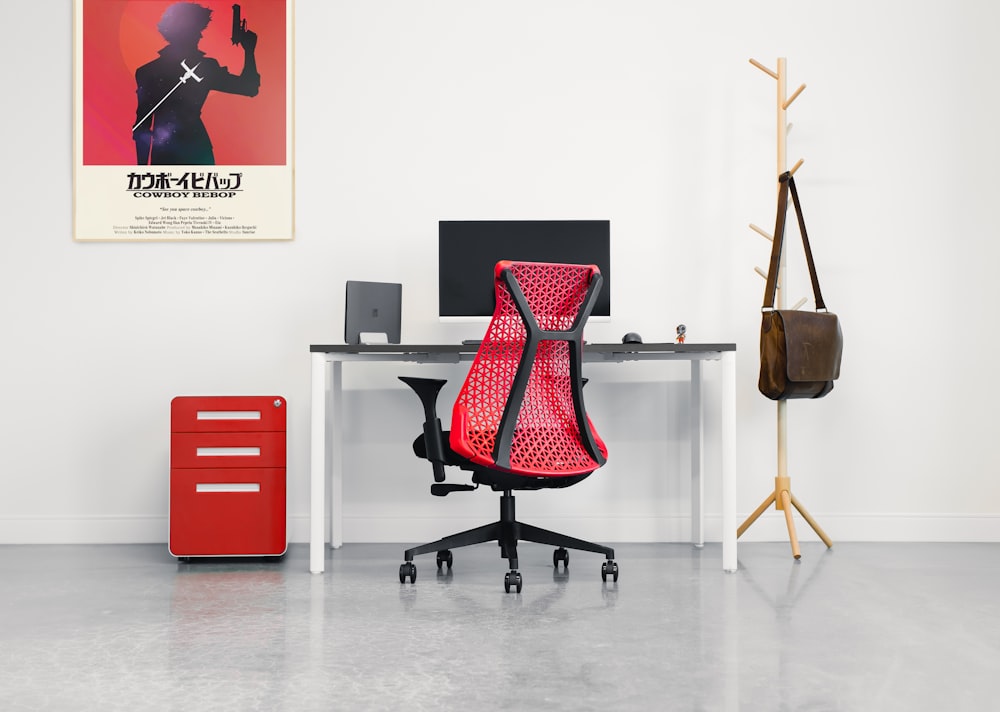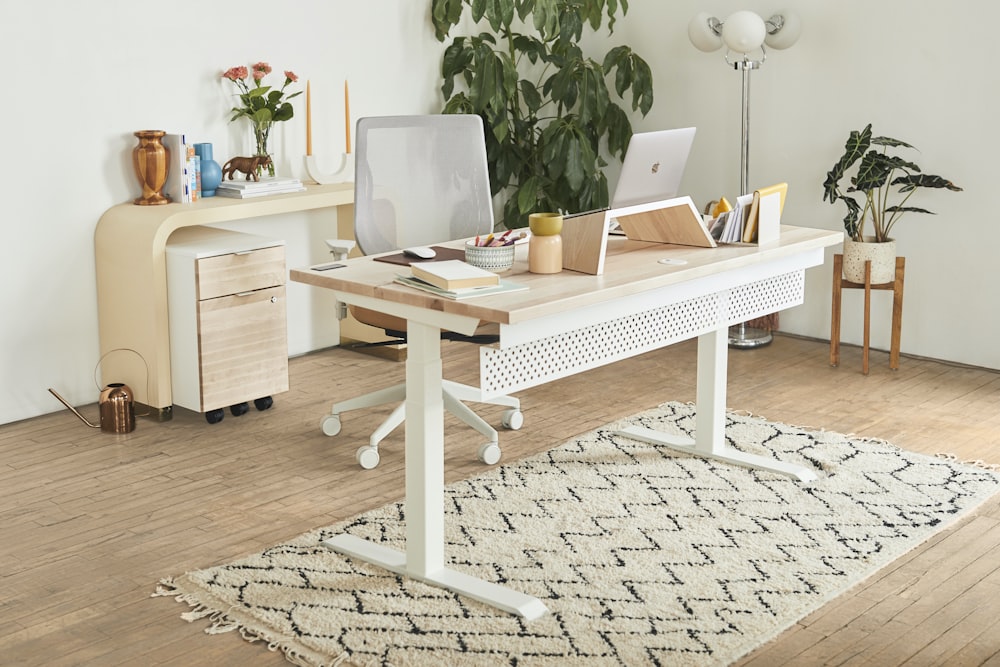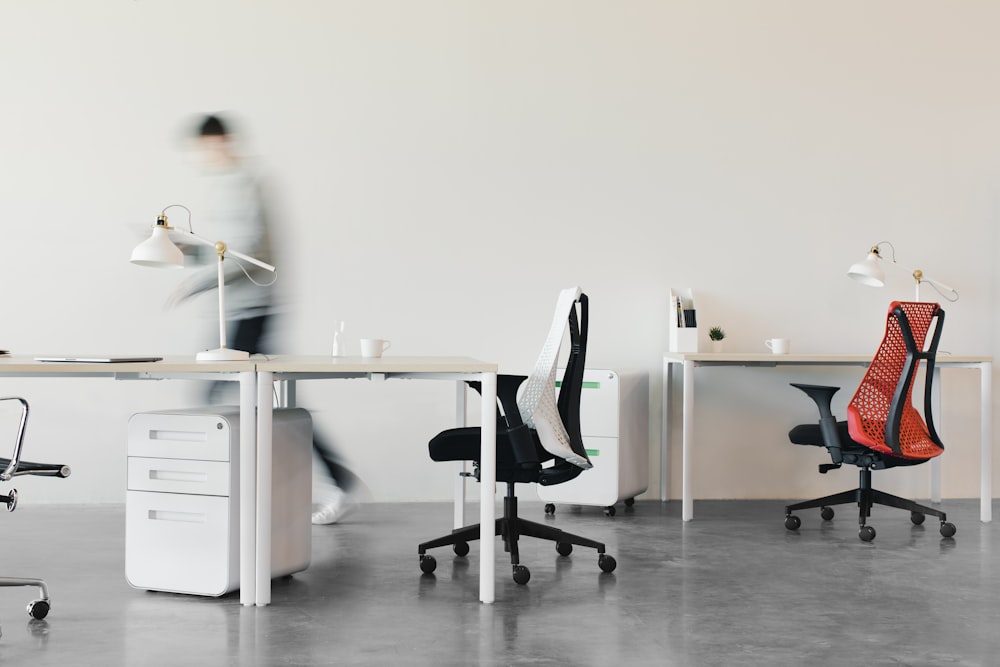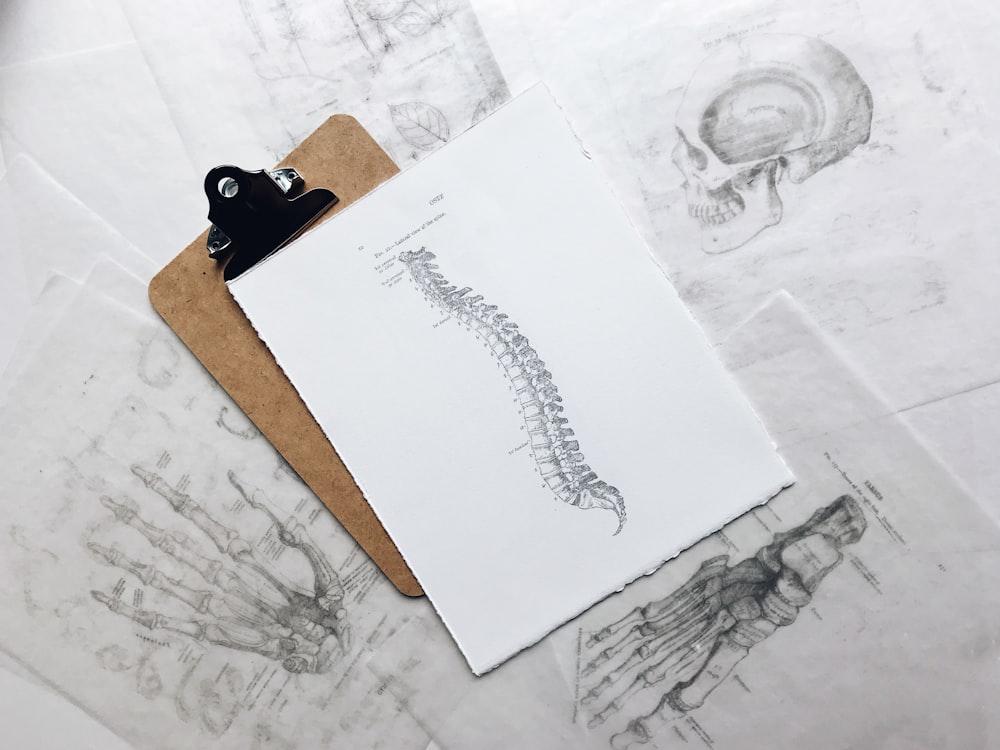
Human beings are designed to be active. However, our activities and duties often prevent us from getting the minimum daily amount of physical activity to stay healthy. Instead, we spend more than half of our waking hours sitting in a chair.
Whether you're working, watching movies, or playing computer games, you're undoubtedly spending significantly more time in a chair than you should. We spend more than a decade of our lives just sitting in chairs, which greatly affects our overall health.
People worldwide have already started to experience the consequences of such behavior. Back pain is the most common health condition many people face today, leading us to question our working habits.
That leads us to the latest trend among office workers – ergonomic office chairs. Can they ease back pain and help you lead a healthier life? Let's find out everything about it!
What causes back pain from sitting?

Back pain is the most common side effect of sitting today, and you're probably aware of its leading causes.
Namely, poor posture is undoubtedly the most significant cause of back pain. That's because poor posture doesn't only represent a problem while we're standing, but while we're sitting too. Naturally, spending a short amount of time sitting won't affect our health, but that's not the case if you spend hours and hours glued to a chair.
Since our bodies aren't designed to sit down for an entire day, most people tend to slouch down or over after some time. Slouching is an example of poor posture because it overstretches the spinal ligaments and strains the spinal discs. After a while, incorrect sitting posture damages our spinal structure, which leads to back and neck pain.
Having a cheap office chair doesn't help with the issue either. If you don't have a good office chair that gives you the necessary back support, you risk spending prolonged periods in an improper body posture.
Leaning forward or slouching backward can cause additional stress on the arms, shoulders, and legs, which further affects the health of your spinal discs and back muscles. Furthermore, poor body posture curves the lower back. These prolonged strains affect the ligaments that support our spine and the whole upper body, resulting in back pain.
In addition to a painful experience, improper body posture can lead to more serious spinal problems that can have long-term consequences if not addressed on time.

How ergonomic chairs ease back pain
Fortunately, avoiding back pain and incorrect body posture is relatively easy once you invest your money in the right products. The market is filled with office furniture designed to offer the necessary support to those who spend extended periods in a sitting position.
All you have to do is find your perfect ergonomic desk chair, ensuring your entire body has the proper support it requires. If you're interested in learning how an ergonomic chair ease back pain, we're here to tell you all about it.
-
Ergonomic chairs ensure proper body posture

One of the main features of ergonomic chairs is that they secure proper posture and help you get rid of back pain.
Ergonomic office chairs for the back are designed to follow the natural inward curve and thus provide the needed back support. Namely, a part of the back of the chair slightly curves forward to match the natural curve in the lumbar region.
Most chair brands and manufacturers promote this ergonomic feature as lumbar support since it protects the lumbar spine. By doing so, the best ergonomic chairs reduce stressful forces on the body and help alleviate back pain.
Other adjustable ergonomic features ensure your entire body is positioned well too. For example, adjustable armrests ensure you use your mouse and keyboard properly without causing unnecessary fatigue in your arms and shoulders. Adjustable height ensures you're sitting with your feet flat against the floor, with your knees and hips bent approximately 90 degrees.
Some ergonomic chairs also have adjustable seat depth to prevent the seat edge from cutting into the back of your knees.
-
Ergonomic chairs secure proper hip and pelvis alignment

Hip and pelvis alignment plays a vital role in proper body posture. The ASIS and PSIS points in pelvic bones heavily impact the structure of other bones in the back, thus affecting the body alignment.
The ASIS and PSIS are points in the pelvic bone structure located in the front and the back of the pelvic bone, respectively. They should always be relative to each other. When ASIS and PSIS points are leveled, your lower back has a natural arch facing forward.
Having your ASIS and PSIS leveled means you're putting less strain on your back, which results in a comfortable experience even if you're sitting over long periods. But, if your ASIS and PSIS points aren't leveled, you will feel additional pressure on these pelvic bone structures.
In most cases, people have their pelvis tilted back when seated. This position is also known as posterior pelvic tilt, meaning that your PSIS point is lower than your ASIS point. Such a position causes tremendous strain on lower-back muscles and ligaments as it flexes the lumbar spine.
Thanks to unique office chairs for the back, you can secure proper hip and pelvis alignment and sit upright. The best ergonomic office chairs will ensure your ASIS and PSIS points are correctly aligned, so you can spend more time sitting without experiencing the adverse side effects.
-
Ergonomic chairs prevent slouching and leaning forward

As previously mentioned, sitting in the posterior pelvic tilt position puts additional stress on your lumbar spine and causes back pain. That's mainly because your shoulders lean forward in the posterior pelvic tilt position, which forces your head to move forward too.
Your neck must extend to support the forward head and shoulder posture, which impacts muscles, discs, and bones in the neck and back area. Spending extended periods in this position often leads to back pain and headaches.
Slouching can also cause back pain. There are several reasons why people slouch.
On the one hand, some people slouch because of internal factors, such as obesity, weak core muscles, or tight hamstrings. On the other hand, some people slouch because of external factors, such as poor chair design. Standard office chairs don't typically have ergonomic features, so they often limit body movement while sitting.
That's why ergonomic desk chairs are equipped with numerous features, such as adjustable lumbar support, armrests, seat height, seat depth, and even seat tilt. With the right chair by your side, you can easily sit properly and prevent slouching.
-
Ergonomic chairs reduce repetitive trunk flexion

Most people don't notice how they complete specific activities while seated. If you're working at a desk, you probably have to reach out to particular items on your desk several times throughout the day.
If you're slouching, reaching things on your desk will be more challenging, forcing you to lean your trunk forward. Repeating this movement over and over again can cause back pain. However, sitting upright prevents you from putting so much pressure on your trunk as you can reach everything on your desk without any issues.
That's what makes ergonomic chairs the best office chairs. Not only do they offer the best lumbar support, but they also make it easier for you to complete your day-to-day activities and tasks.
-
Ergonomic chairs improve comfort levels

Finally, high-quality ergonomic chairs are incredibly comfortable, making them perfect chairs for back pain. They use high-quality materials and fabrics to offer premium comfort even when you spend hours sitting. A mesh chair is a go-to choice for many because it's considered the best choice if you're looking for a flexible, comfortable, and stylish chair.
Additionally, many ergonomic chair designs feature a special seat cushion or two for extra support. The contoured design of these cushions improves the fit of the chair and offers lumbar support. Some new chair designs also feature a neck cushion, further reducing back pain.
Next, the ergonomic chair features an adjustable headrest, armrests, seat height, seat depth, and seat tilt. Everyone can customize their ergonomic chair according to individual preferences and needs with so many components.

Useful guidelines for setting up your ergonomic office chair
If you've recently become a proud owner of an ergonomic office chair, you're surely curious about how to take advantage of its core ergonomic features. When you correctly set up your ergonomic chair, you can improve back support, reduce back pain, and maintain proper posture while sitting.
As you can probably guess, buying the best ergonomic chair on the market isn't enough to ensure you benefit from its features. You must adjust even the best office chairs for back pain to fit every body type and size appropriately.
The essential step is to select the desired height of your seat. The perfect height depends on your desk or workstation. You'll probably have to switch between several chair height levels if you have a standing desk.

If you aren't sure what the perfect seat proportions are for your body type, here are some useful guidelines to ensure you correctly set up your ergonomic office chair.
Elbow measure
First, sit in your chair. Try to sit as close to the desk as possible to ensure your upper arms and spine are in a parallel position. Put your hands on the desk. Ideally, your elbows should be at a 90-degree angle. If that's not the case, increase or reduce your chair height until you reach the 90-degree position.
Thigh measure
Once you've measured your elbows, it's time to measure your thighs. While seated, try to slide your fingers under your thigh. If you can't do that because of the chair edge, you need to use an adjustable footrest. Raise your seat and desk height accordingly if there's significantly more space between the chair and your thighs.
Calf measure
When measuring your calves, sit in a chair with your back pushed against the chair's backrest. Clench your fist and move it between the front of your office chair and the back of your calf. If you have trouble doing so, your seat is too deep. Adjust the backrest or use a lumbar support cushion to ensure you sit in your office chair properly.
Low back support
One of the key features every best chair for back pain must have is low back support. In addition to the curvy design that follows the spine's natural arch, the best office chairs also come with a cushion for additional lumbar support.
The purpose of the curved design and lumbar pillow is to prevent slouching down or slumping forward after spending more time in the chair. With the much-needed back support, you can rest assured the stress on your upper, and lower back is minimized as long as you rest your back on the chair's backrest.
Armrest
Your arms need some support too, which is why you need to adjust your armrests. The purpose of armrests is to lift your arms ever so slightly, just enough to reduce the strain you put on your shoulders, neck, and upper spine. Also, armrests will prevent you from slouching forward while seated in your office chair.
Resting eye level
Finally, your resting eye level affects the strain on your upper spine. To determine your resting eye level, you must hold your head straight and close your eyes. When you open your eyes, you should look at the center of your computer screen. You need to adjust your computer screen height if the screen is lower or higher.

Other handy tips connected to office chairs
Now that you have a perfectly adjusted ergonomic office chair for back pain, you can look at some other handy tips that'll make sure you say goodbye to back pain forever.
Maintain good posture

We've already stressed the importance of proper body posture. When you maintain the correct posture, you can quickly reduce the stress on your muscles and preserve the health of your spine.
Poor posture affects the health of your ligaments, muscles, and discs, alongside other parts of your back. Improper posture doesn't only lead to excruciating back pain but the pain in other body parts as well, such as arms, legs, feet, and shoulders.
To avoid that from happening, follow the abovementioned guidelines to ensure you maintain the correct posture while seated in a chair for extended periods.
Be active
Even if you own the world's best office chair and follow all the tips and tricks mentioned in this article, you still need to introduce some activity to keep back pain as far away as possible.
Nevertheless, that doesn't mean you must participate in exhausting physical activities to achieve visible results. A 20-minute daily walk is more than enough to avoid experiencing back pain. A relaxing walk can help you wind off and promote healthy blood flow to your spinal structures.
Take breaks
If your job requires you to spend large amounts of time seated in your office chair, remember to take a short break every 30 minutes. Standing up and stretching only for 1–2 minutes makes a world of difference for your back health, even if you're just taking a quick bathroom break.
Prolonged static postures are a one-way ticket to back pain, so remember to keep moving about and stay active in any possible way. Any form of physical activity will keep your muscles, ligaments, joints, and tendons flexible, which helps you focus better and work more productively.
Adjust your workspace
Everything starts from your workspace. If your workspace isn't adjusted to your personal needs, it will be highly challenging to maintain healthy working habits and maintain optimal back health.
Therefore, pay close attention to your workspace. Make sure your office chair and desk are correctly adjusted to your height. If you feel discomfort after spending long hours working, there's a high chance that something in your setup isn't adjusted appropriately to your unique needs.
Also, pay attention to other elements in your workspace. Besides ergonomic chairs for back pain, you can also invest in an ergonomic mouse, keyboard, and other user-friendly workspace essentials. Although investing in all these items seems unnecessary at first glance, you're investing in your long-term health.
Avoid certain multitasking activities

We all know how hectic work can get and that you're forced to multitask if you want to get everything done by the end of your working day. However, that doesn't mean you should multitask at all times, mainly if it implies putting your back health at risk.
For example, many workers answer phone calls or use tablets while answering emails. Although this activity might seem silly initially, repeating the same behavior over more extended periods can easily lead to chronic back pain.
That's because you're constantly moving your body even if you believe you're sitting at your desk correctly.
When possible, try to tackle one task at a time. If you're answering emails, maintain a proper posture while sitting at your desk without having to switch between activities all the time.
Invest in computer glasses
Yet another great tip is to invest in computer classes. As all functions and responsibilities start to imply computer use, you might have to tilt your head slightly if you want your progressive lenses in glasses to work. Even subconsciously tilting your head, doing so for prolonged periods can cause neck fatigue and headache.
Investing in computer glasses is the perfect solution – just make sure to consult with your ophthalmologist before getting a pair.

Exercises that alleviate back pain at work
Are you looking for discreet stretching exercises that'll allow you to alleviate some back pain at work without having to leave your workspace? These three exercises help ease back pain quickly and easily, without you having to stand up from the office chair or move around the workspace.
Finger point exercise
-
Stretch your right hand in front of you, with the palm facing outwards and the fingers pointing to the floor.
-
Increase the stretch with your left hand by pulling the fingers down towards the body.
-
Repeat by reversing the sides.
Backstretch exercise
-
Place your left hand on your right shoulder.
-
Place your right hand on your left shoulder.
-
Slowly breathe in and out.
-
Repeat several times.
Neck retraction exercise
-
Put your head in a forward-facing, resting position.
-
Tilt your head backward as far as you can.
-
Hold 3–5 seconds and release.
-
Repeat ten times.
The bottom line
If you spend hours at a desk, having a traditional office chair doesn't provide the necessary features to keep back pain at bay. Instead, choosing an ergonomic office chair with lumbar support is what you need to do.
Investing in the best office chair for the back and adjusting it to fit your body proportions allows you to spend hours sitting without feeling the adverse side effects.
Even though some other chairs might look nicer or fit your office space style better, only an ergonomic office chair can ensure your back and the rest of the body receive the needed support.
Sources:
https://www.spineuniverse.com/wellness/ergonomics/you-sitting-comfortably-how-your-chair-can-cause
https://www.beaconortho.com/blog/3-ways-reduce-office-back-pain/


